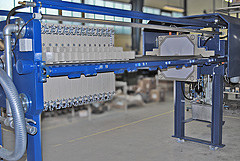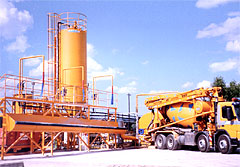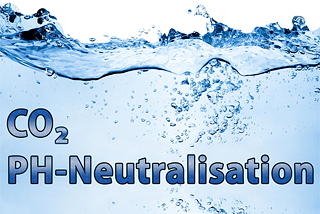ECOPRESS
Filter press for slurry compacting
 In the concrete industry slurry results from waste concrete, washing out of elements as well as sawing, grinding and polishing. In sand washing plants slurry is produced as a by-product from the sand processing.
In the concrete industry slurry results from waste concrete, washing out of elements as well as sawing, grinding and polishing. In sand washing plants slurry is produced as a by-product from the sand processing.
After thickening of the slurry in the AQUACLEAN water treatment system the concentrated slurry is pumped to the ECOPRESS, which transforms it into filter cakes. For small quantities of slurry the ECON dewatering container is recommended.
The ECOPRESS transforms the slurry into highly dewatered filter cakes, which can be disposed on landfills.










